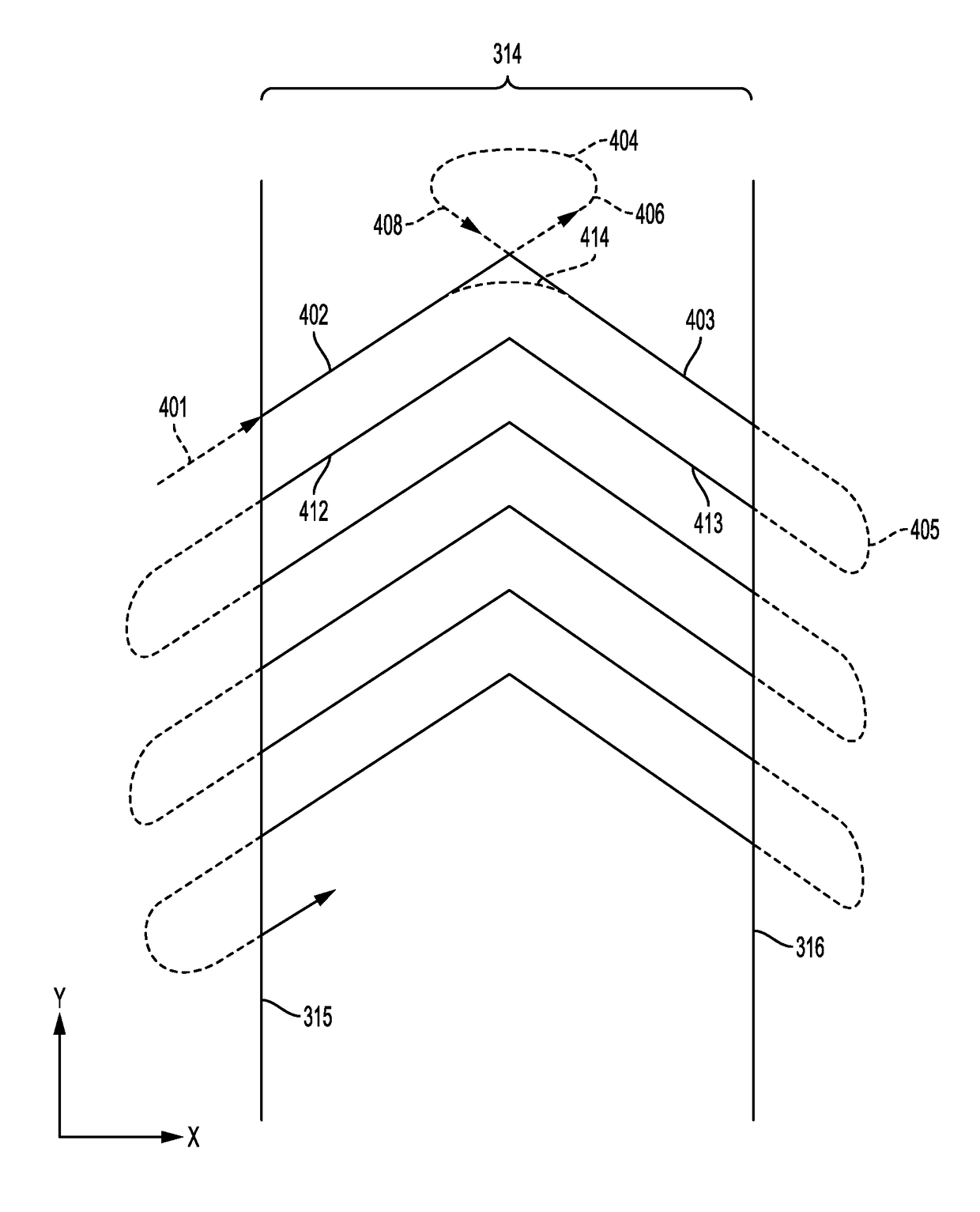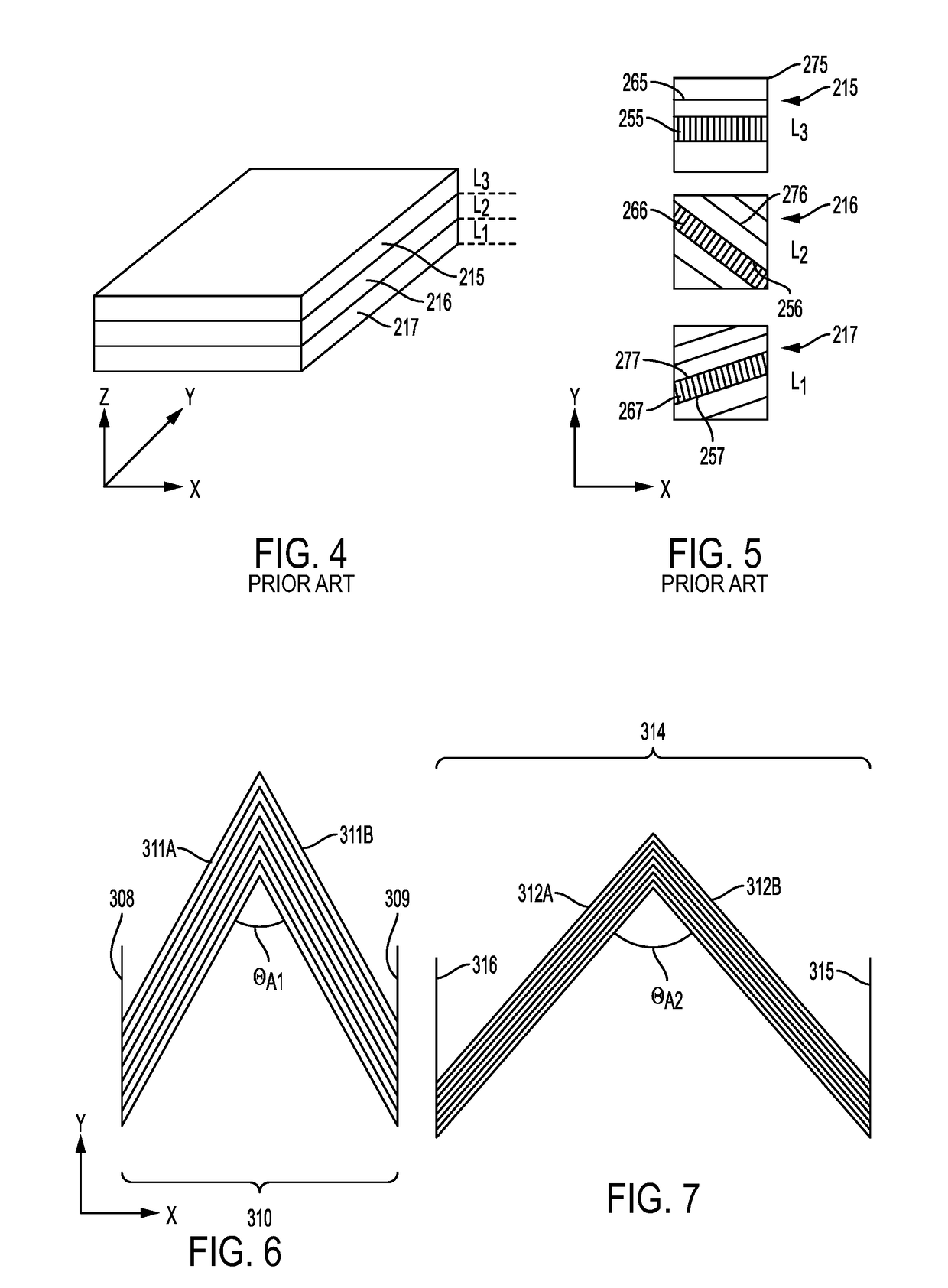Triangle hatch pattern for additive manufacturing
a technology of additive manufacturing and triangles, which is applied in the direction of additive manufacturing, manufacturing tools, additive manufacturing, etc., can solve the problems of slow build process, melt pattern inaccuracy, burnout effect, etc., and achieve the desired speed of the build process, improve the microstructure of the completed component, and improve the build efficiency and/or stress balance
- Summary
- Abstract
- Description
- Claims
- Application Information
AI Technical Summary
Benefits of technology
Problems solved by technology
Method used
Image
Examples
Embodiment Construction
[0034]While the aspects described herein have been described in conjunction with the example aspects outlined above, various alternatives, modifications, variations, improvements, and / or substantial equivalents, whether known or that are or may be presently unforeseen, may become apparent to those having at least ordinary skill in the art. Accordingly, the example aspects, as set forth above, are intended to be illustrative, not limiting. Various changes may be made without departing from the spirit and scope of the disclosure. Therefore, the disclosure is intended to embrace all known or later-developed alternatives, modifications, variations, improvements, and / or substantial equivalents.
[0035]When using any of the abovementioned AM techniques to form a part by at least partially melting a powder, a scan of the laser across the powder material, in a raster scan fashion is used to create hatch scans (hereinafter referred to interchangeably as hatch scans, rasters, scan lines, or sol...
PUM
| Property | Measurement | Unit |
|---|---|---|
| angle | aaaaa | aaaaa |
| angle | aaaaa | aaaaa |
| angle | aaaaa | aaaaa |
Abstract
Description
Claims
Application Information
 Login to View More
Login to View More - R&D
- Intellectual Property
- Life Sciences
- Materials
- Tech Scout
- Unparalleled Data Quality
- Higher Quality Content
- 60% Fewer Hallucinations
Browse by: Latest US Patents, China's latest patents, Technical Efficacy Thesaurus, Application Domain, Technology Topic, Popular Technical Reports.
© 2025 PatSnap. All rights reserved.Legal|Privacy policy|Modern Slavery Act Transparency Statement|Sitemap|About US| Contact US: help@patsnap.com



